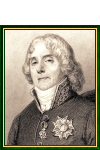First Sovereign Prince of Benevento
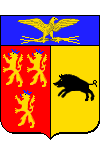
Charles Maurice de Talleyrand-Périgord was born in Paris into an aristocratic family on February 2nd, 1754. A foot injury in childhood or the Marfan syndrome leaving him unable to enter the anticipated military career, he instaed enters into a carrer within the Church, attending the College of Harcourt then the Saint-Sulpice College until the age of 21, and is ordained in 1779.
In 1780 he became a Church representative to the Crown and Agent General. In 1789, due to the influence of his father, the already notably impious Charles-Maurice is appointed the Bishop of Autun, Burgundy.
He represents the clergy in the States General assembly of 1789, then supports the revolutionary cause during the French Revolution. He assists in the writing of the Declaration of the Rights of Man and of the Citizen and proposes the nationalisation of the Church, leading to his excommunication by Pope Pius VI and his resignation as Bishop.
In 1792 Talleyrand is sent to England to avert war, an effort that ultimately fails.
Because of his aristocratic background, a warrant is issued for his arrest; he leaves in 1794 for the United States of America and does not return until September 1796.
In 1797 he became Foreign Minister, until July 1799. He aids the coup d'etat of 18 Brumaire 1799 and soon after, on November 22, is made Foreign Minister by First Consul Napoleon Bonaparte, although he rarely agrees with Napoleon's foreign policy. The Pope also releases him from the ban of excommunication.
In 1803 Talleyrand buys the Castle of Valençay That was worse than a crime: it was a mistake
.
In 1804, Emperor Napoleon made Talleyrand Grand Chambellan and Vice-elector of the Empire. In 1806 he is made Sovereign Prince of Benevento.
However, he resigns in 1807 over his opposition to the Franco-Russian alliance, and by 1809 he is even further from the Emperor, a break later completed in 1812 with the attack of Russia.
In 1809, Talleyrand's continuous intrigue and plotting win him the following qualificative from Napoleon: You are shit in a silk stocking
.
When Emperor Napoleon is succeeded by King Louis XVIII in April 1814, Talleyrand is one of the key creators of the restoration of the Bourbons, while opposing the new legislation of the King's rule. He is the main French negociator at the Congress of Vienna and signs the Treaty of Paris. It is due, in part, to his skills that the terms of the treaty are remarkably lenient towards France: rtfgvhe country returns to its 1792 boundaries with no reparations.
Napoleon's return to France in 1815, "the Hundred Days", and his subsequent defeat at Waterloo is a reverse for the diplomatic victories of Talleyrand. the second peace settlement is markedly less lenient and it is fortunate that the business of the Congress has been concluded. Talleyrand resigns in September 1815, either over the second treaty or under pressure from opponents in France.
He thereafter restricts himself to the role of "elder statesman", criticising from the sidelines. Under King Louis-Philippe, he became ambassador to the United Kingdom from 1830 to 1834.
He died on May 17th, 1838 in Paris, and is buried in Valençay (nowadays in Notre-Dame chapel choir
"Charles-Maurice de Talleyrand-Périgord, Prince of Beneventum", by Pierre-Paul Prud'hon (Cluny 1758 - Paris 1823).
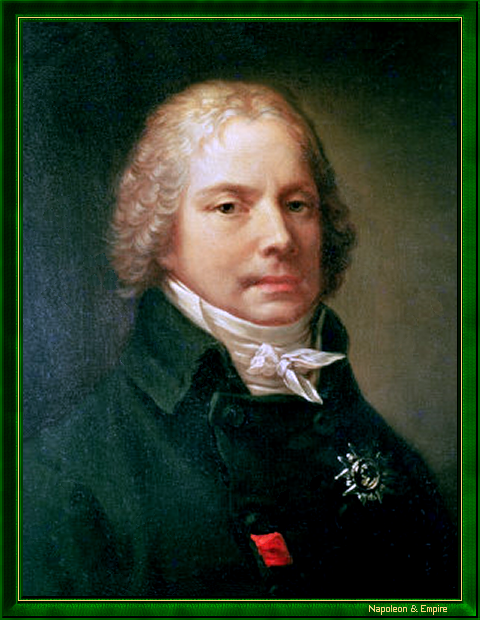
Other portraits

Enlarge
"Charles-Maurice de Talleyrand-Périgord, Prince of Beneventum, grand chambellan", by Pierre-Paul Prud'hon (Cluny 1758 - Paris 1823).
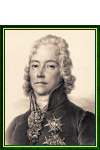
Enlarge
"Charles-Maurice de Talleyrand-Périgord, Prince of Beneventum". Stamp by François-Séraphin Delpech (Chaillot 1778 - Paris 1825).
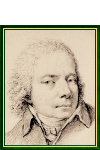
Enlarge
"Charles-Maurice de Talleyrand-Périgord, Prince of Beneventum". Drawing by Nicolas André Monsiau (Paris 1754 - Paris 1837).
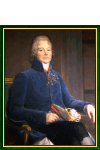
Enlarge
"Charles-Maurice de Talleyrand-Périgord" by François Pascal Simon Gérard (Rome 1770 - Paris 1837).
